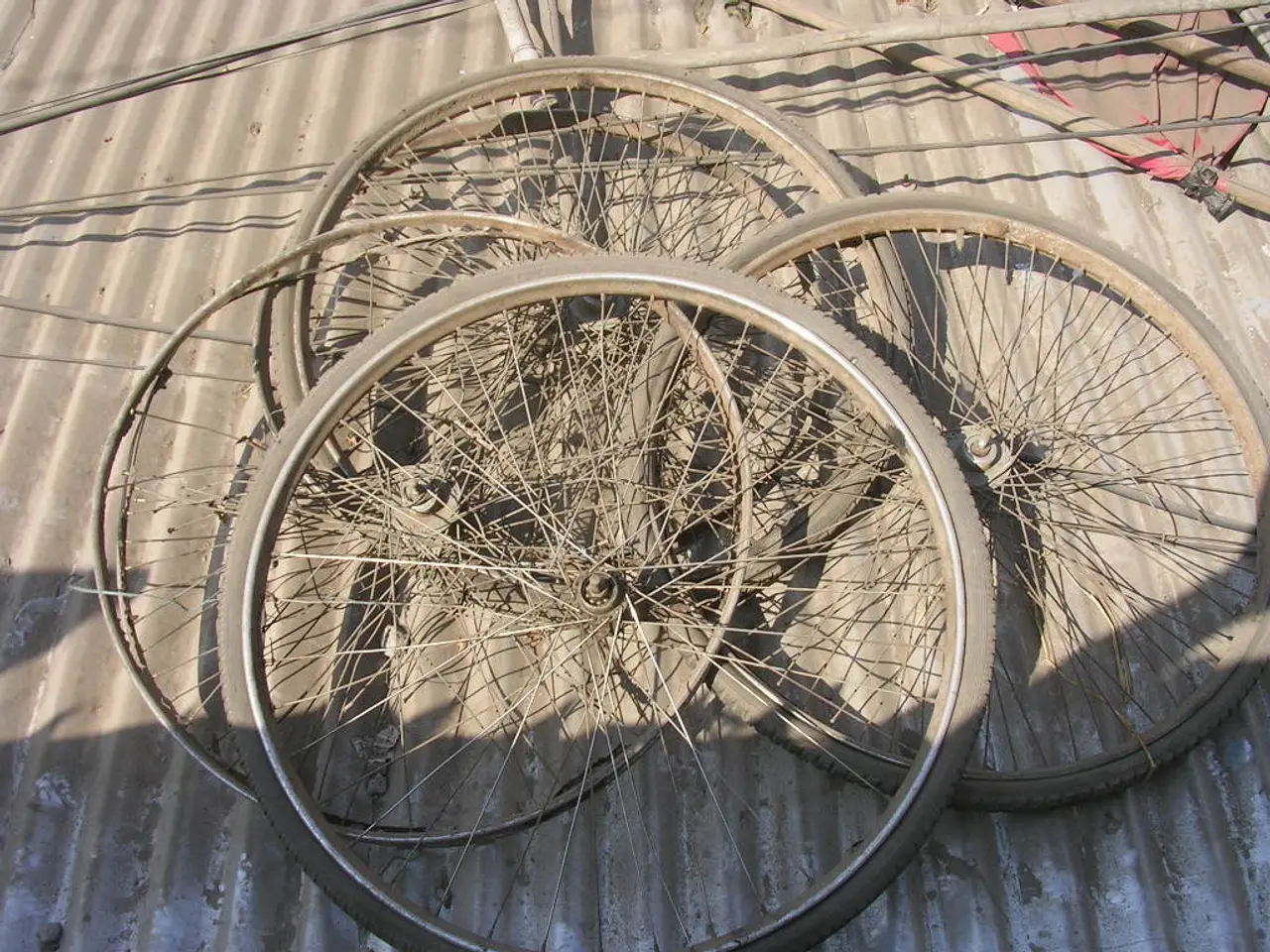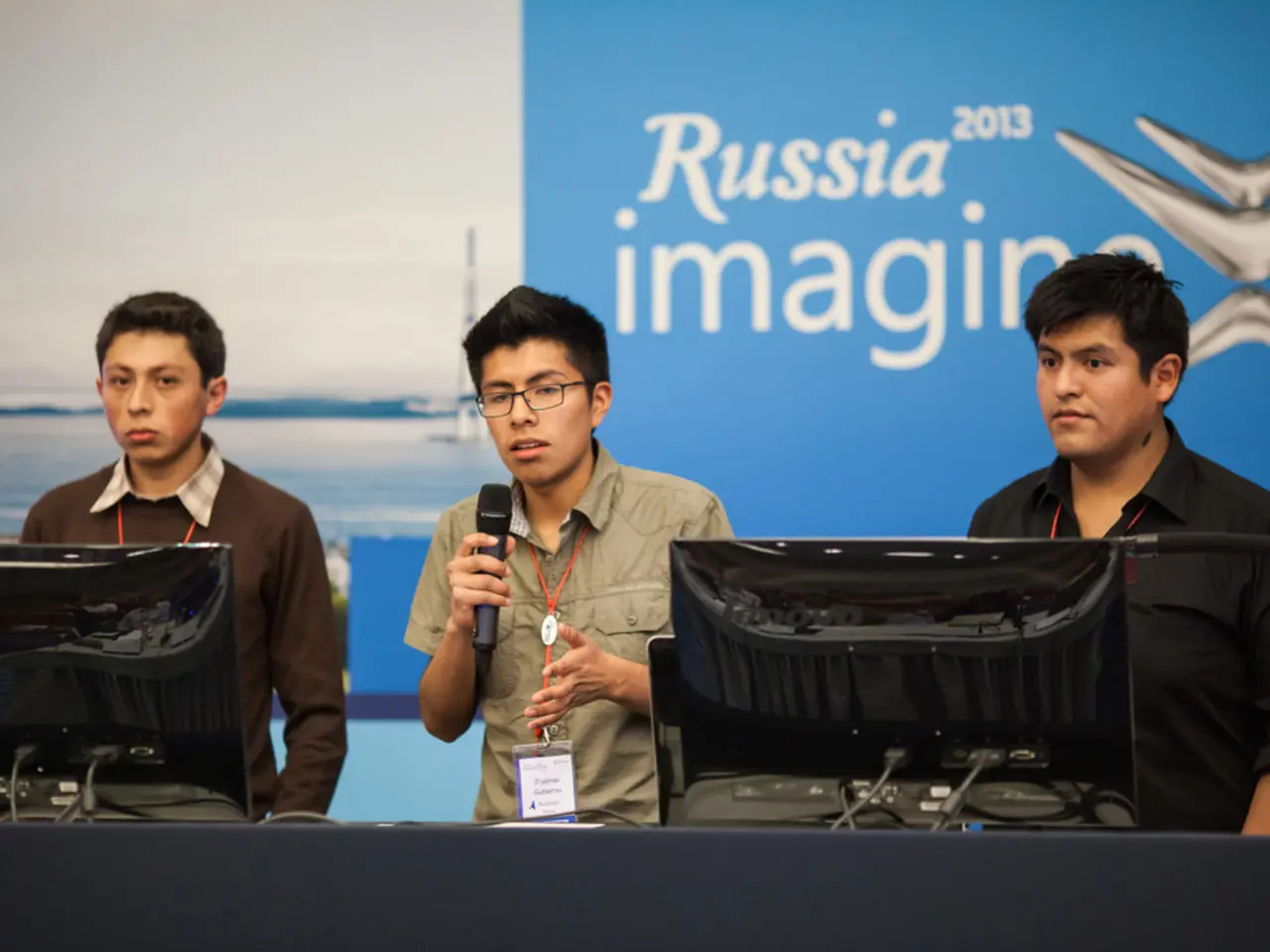Mobile Bicycles Turned into Air Quality Measuring Devices
In a groundbreaking initiative, a group of innovative students from a Karlsruhe high school has developed a mobile fine dust measuring device as part of the CycleSense research project. This project, based at the Karlsruhe CyberForum, recently won first prize in the Geo- and Space Sciences category at the nationwide "Jugend forscht" competition in 2023.
The mobile device, designed to automatically collect air quality data while cycling, is set to revolutionize the way air pollution is monitored in urban environments. With 100 measuring modules produced for the project, interested citizens can register to participate in the first measuring phase, which is set to commence soon.
The devices, costing around 200 euros each, are equipped with sensors that measure particulate matter (PM), including PM2.5 and PM10, as well as other pollutants like NO2 and CO. By moving through different areas, these devices provide a high-resolution spatial distribution of air pollutants, offering a more detailed view of air pollution than the current five fixed measuring stations.
Data collected during rides throughout the city will be transmitted to a central server in Karlsruhe for analysis using advanced geospatial techniques. This data is expected to provide a more precise and detailed view of air pollution, aiding local authorities in developing targeted strategies for reducing air pollution and optimizing urban planning to minimize pollution hotspots.
The project also incorporates data from stationary monitoring stations, satellite imagery, and crowdsourced reports to enhance the accuracy and granularity of the maps. Advanced algorithms and machine learning techniques may be used to process the data, adjust for sensor calibrations, and account for environmental factors affecting readings.
GIS tools help create interactive maps that can be shared with the public, researchers, and policymakers to visualize pollution patterns over time and space. This increased awareness can encourage personal actions to reduce exposure and promote informed decision-making.
The success of the CycleSense project is a testament to the power of innovation and collaboration. The production of the devices was funded by the Karlsruhe Research Center, the local utilities, and the city, demonstrating a commitment to improving air quality in the region. A second measuring phase is planned to start in the fall, further expanding the project's reach and impact.
This general approach outlines how mobile fine dust measuring devices can enhance air pollution mapping efforts, offering a promising solution for cities worldwide seeking to improve their air quality monitoring systems.
The mobile fine dust measuring devices, a product of the innovative CycleSense project, will utilize advanced technology to collect and analyze environmental-science data, specifically particulate matter and other pollutants, within urban environments. With these devices, shared through the citizen-participation phase, it is hoped that the collaboration between science and technology will lead to a more detailed understanding of air pollution, enabling targeted strategies for reduction and minimizing pollution hotspots.




